Velvet revolution: From Gaultier to Dior, the best from spring/summer 2015 Paris shows
A feeling of change was in the air at the spring/summer 2015 Paris shows, with designer debuts and departures sweeping the city’s maisons. The best collections cleverly riffed on fashions past to create something forward-looking
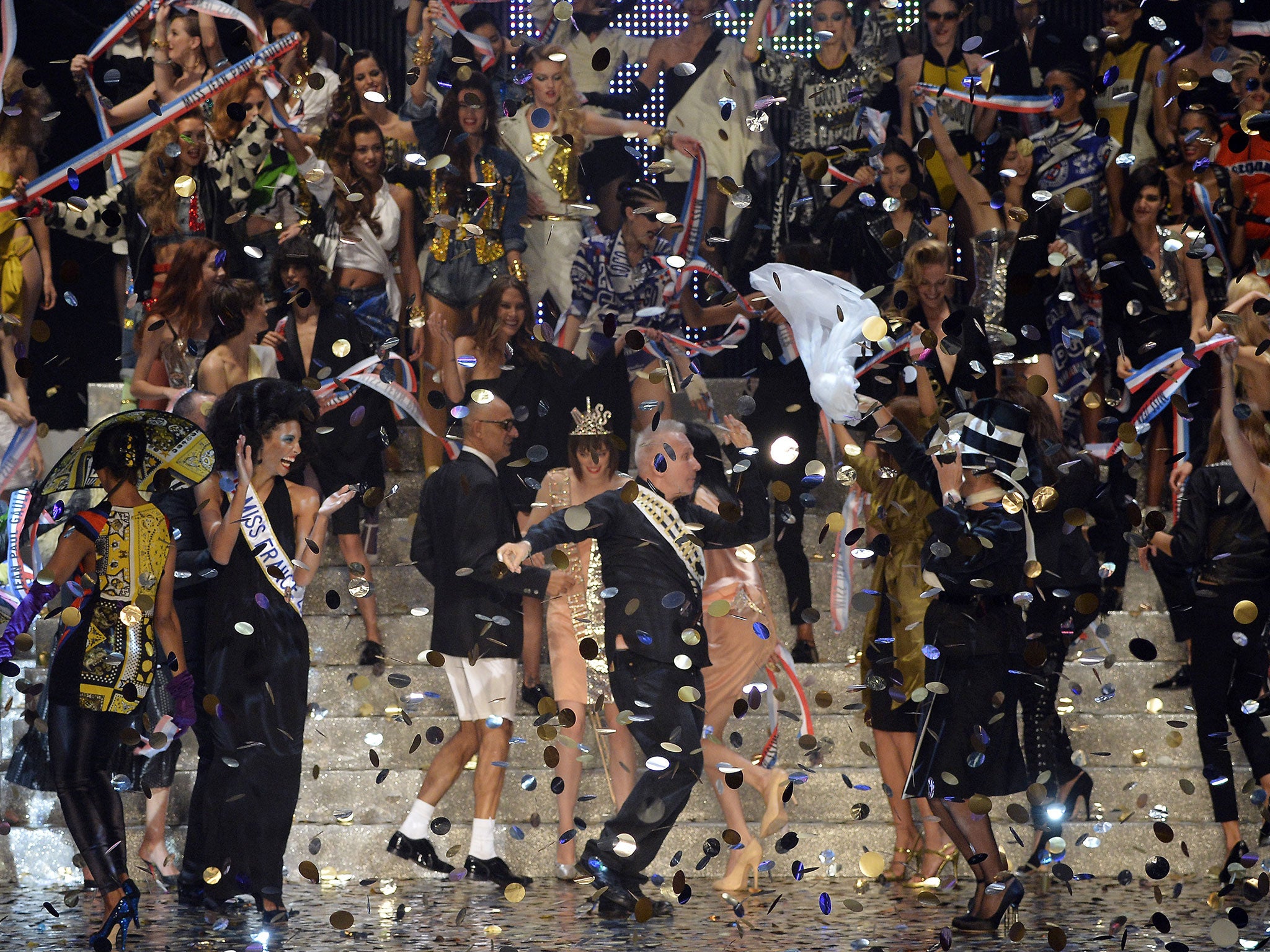
Paris is steeped in history – Haussmann’s boulevards, Eiffel’s tower, Marie Antoinette’s head. They were all there in the city’s spring/summer 2015 collections. Why? Because this felt like a season in flux, in upheaval. And in times of upheaval, looking back and steadying yourself in the past is the most obvious thing to do.
The upheaval in the outside world – the declaration of war, the Hong Kong protests, the threat of a Metro bombing that ran around Paris in the midst of the shows – was reflected in the smaller, more insular world of fashion itself. Designers moved and shaked, debuts were made, final bows taken. Julie de Libran took her bows at Sonia Rykiel for the first time, JW Anderson debuted at Loewe, David Koma at Mugler. On the flipside, Nina Ricci confirmed on Thursday that their creative director, Peter Copping, had departed, one week after his final show for the label. His replacement is expected to be Guillame Henry of Carven who left that label on Monday. Jean Paul Gaultier also bowed out, on a permanent basis, from his own ready-to-wear line after 38 years, although he will continue to show biannual haute couture collections.
Hence, the collections this season were tinged with a feeling of instability, of change in the air. I don’t mean the “faux-test” at Chanel, where models brandished placards, cheering and cringing in equal measure, but the palpable sense of a shift afoot. Perhaps that is why, after a slow start to the season, Paris designers created clothes that resonated. Resonated beyond the shopping-rail, too, which seemed to have been a focus of designers in the other three cities. What that led to was a general (but not universal) timidity in the design and a limited viewpoint. Designers were looking to make an impact for next season, but not something that would linger any longer.
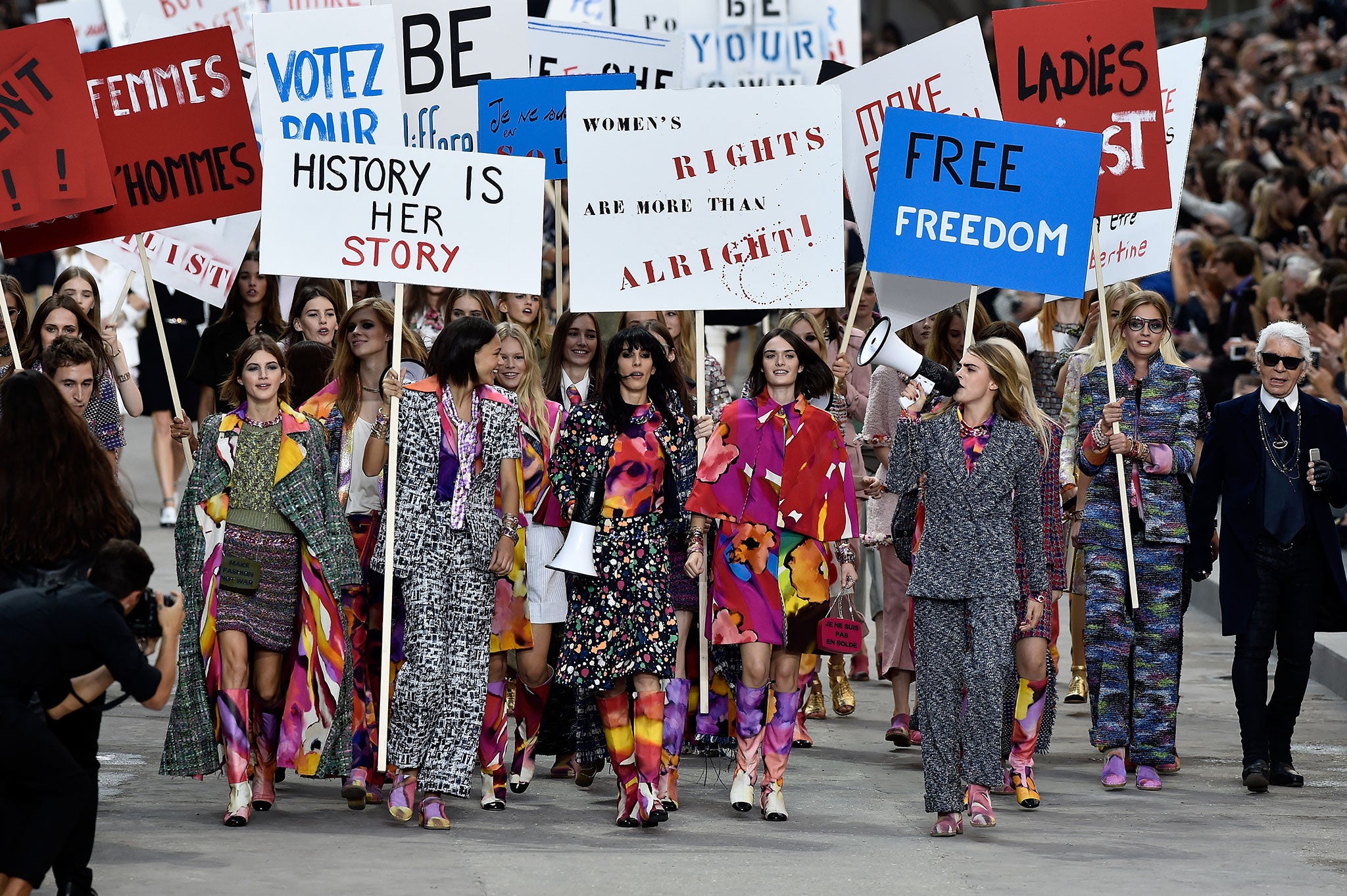
That brings us back to history, and Paris. Considering that the fashion industry true was founded there in 1858 by Charles Frederick Worth – the first haute couturier – it’s always on the mind. Likewise the fact that, of the names listed above, only Jean Paul Gaultier is working under his own. The transfusion of new blood into the decrepit old bodies of French couture houses has been going on for decades. Actually, centuries – Worth carried on long after Charles Frederick died in 1895, under his sons and grandsons.
Just look at the house of Dior – not that Dior was decrepit, but the fact Raf Simons declared that his latest collection was inspired by the notion of refashioning the past to create the future, has special resonance. Simons fused together disparate garments from disparate times, adding 18th-century sleeves to silk boiler suits, or traditional petticoat-quilting to loose bermuda shorts, or transposing the details of an elaborately cut court mantua gown into an organza-veiled bomber jacket, to create a melange of styles that felt contemporary, or even forward-looking. The main question that he posed himself? What is “modern”? It’s a question that he found so compelling, he carried it over from his haute-couture collection. And, in a sense, it was there in his menswear collection before that, in the bricolage cut-and-paste visuals like pictures Blu-Tacked to a teenager’s bedroom wall – including a passport image of Simons himself. If that was profoundly personal, his take for Dior ranged wider.
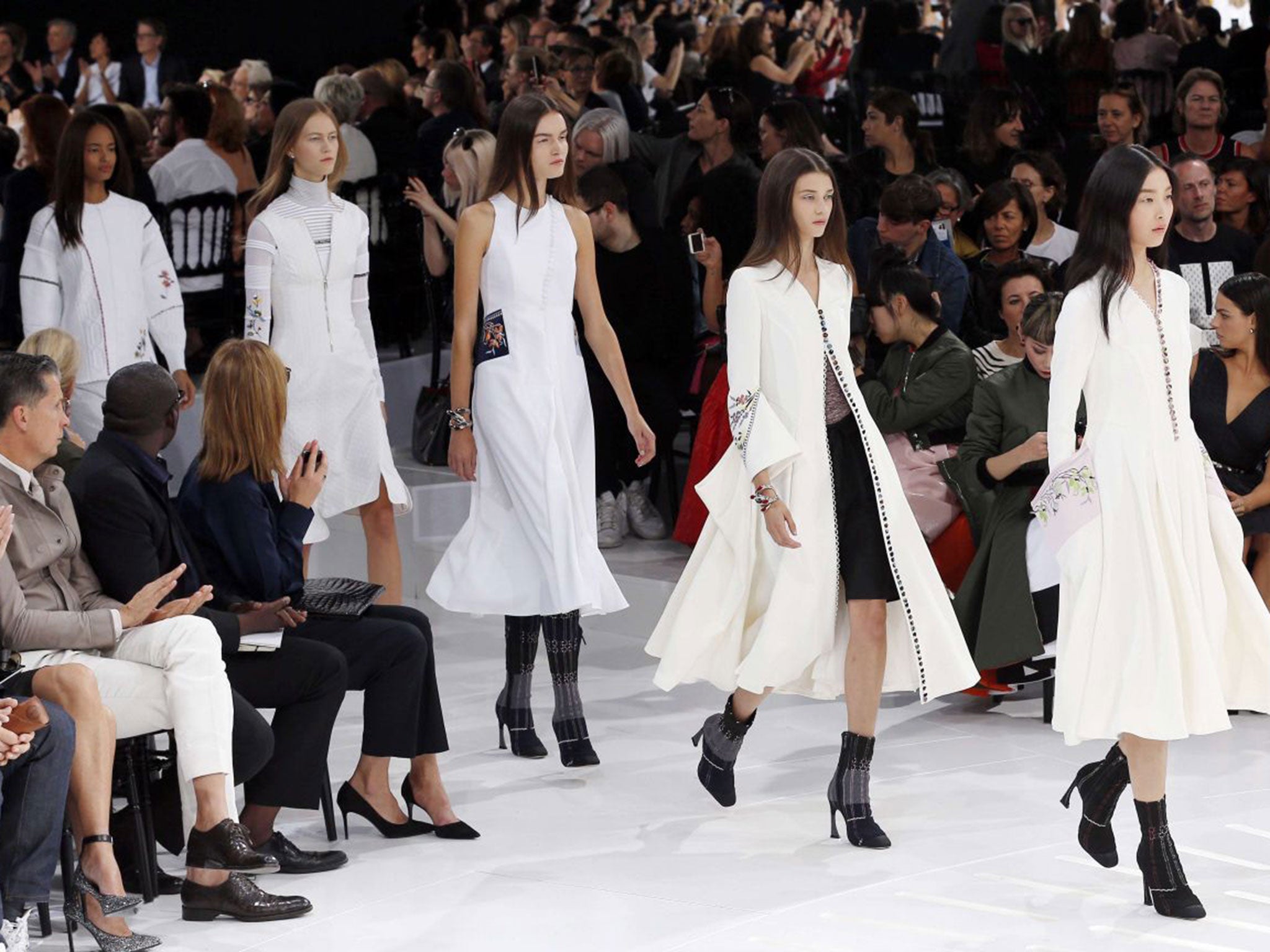
Nicolas Ghesquiere alighted on the same notion at Louis Vuitton. If Simons delved back to the 18th century – the crucible of modernism, particularly in clothing – Ghesquiere looked to the start of the space race, and retro notions of futurism. In the confines of the ergonomic, aerodynamic Frank Gehry-designed Fondation Louis Vuitton – as close, in all likelihood, as most of the fashion press will get to a spaceship – Ghesquiere showed a collection that managed to look backwards and think forwards. The silhouette was leggy, the clothes compact, multi-textured and multi-layered, intricately worked with plasticised finishes and a penchant for printed velvet. Every element, from jewel-like minaudiere micro-trunk handbags to patchwork boots and embellished dresses, frequently knitted from what seemed like insulated electrical wire or plastic coated elastic, were worked to their zenith, but never overworked.
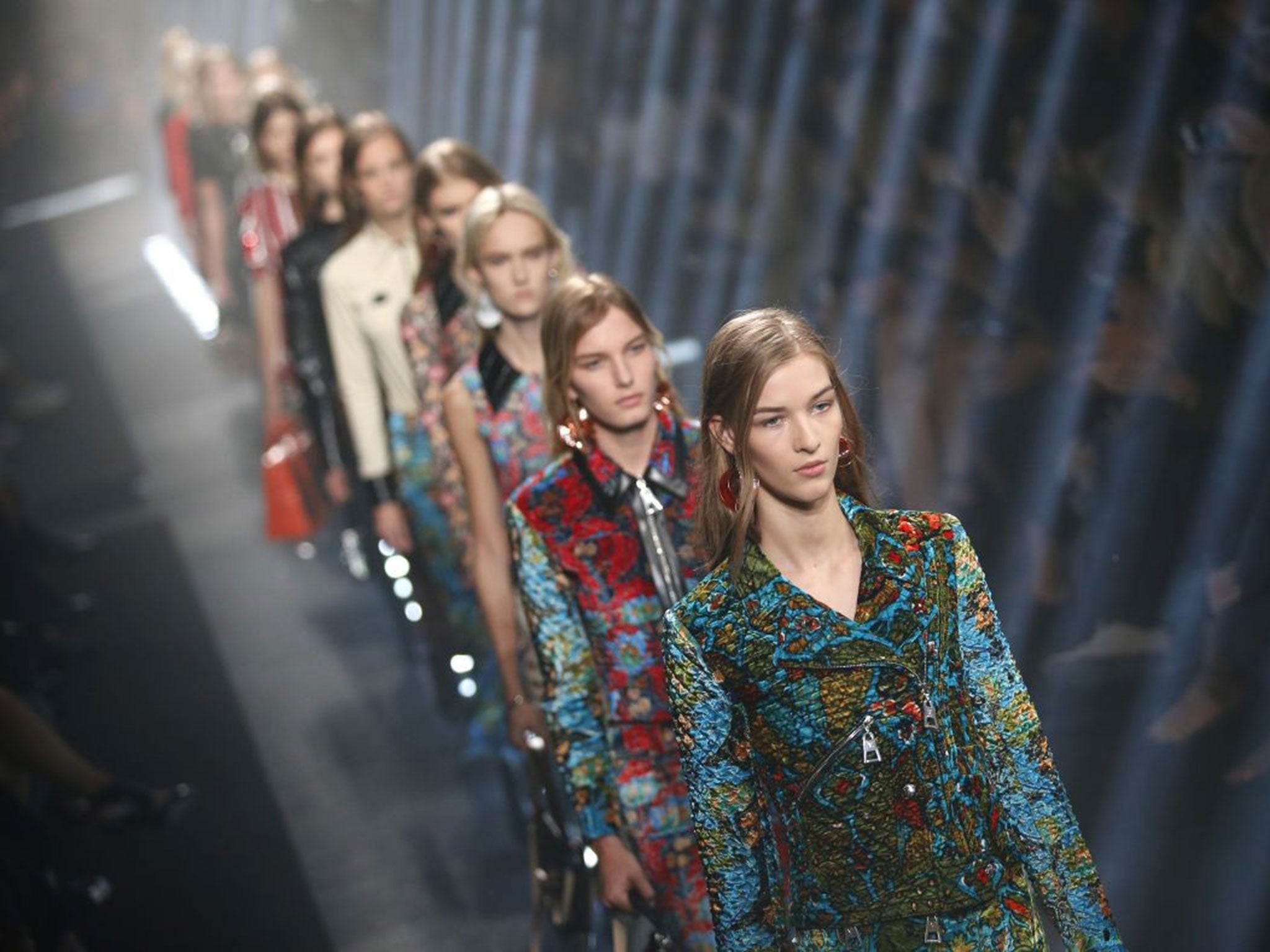
Ultimately, everything felt like it had a place in the here and now, and on someone’s back. Nothing will end up on anyone’s back from Rei Kawakubo’s Comme des Garçons show, but, for a collection reflecting the moment in which we are living, it was bang on. “Blood” and “roses” were her two watchwords, both immediately conjuring up a gaggle of images, all of which Kawakubo explored. The collection was red – soaked through with the colour, the only respite a menacing black hood, another in transparent PVC and a clutch of white stained with red, as if wounded. There was a savage grace to this Comme des Garçons show, an unsettling beauty. Unsettling, perhaps, because it looked outside the bubble of the fashion world and reacted to the unsettling developments in the wider sphere – not just in recent weeks, but over the past year. It was a disconcerting, arresting, provocative and powerful show.
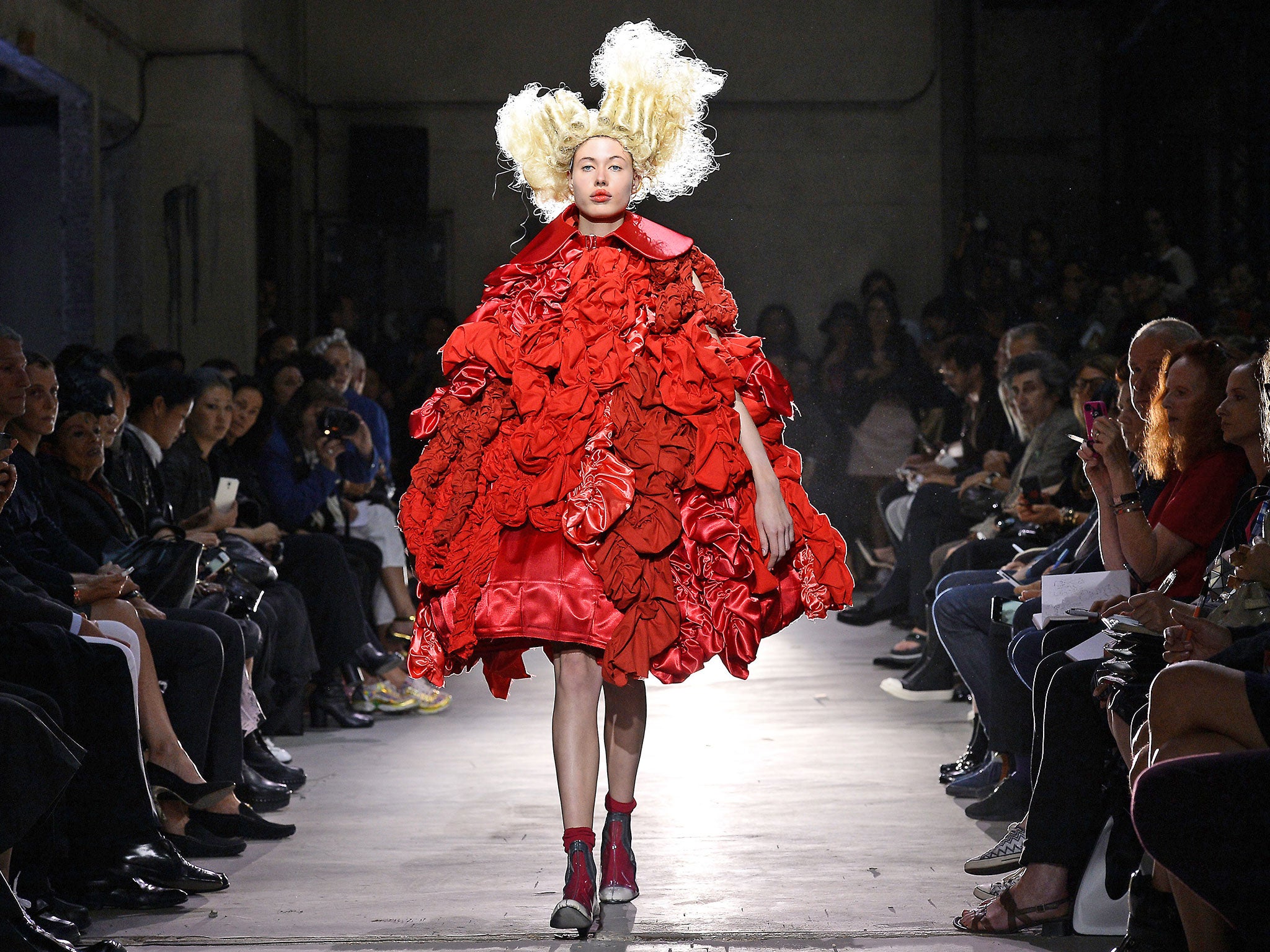
At the other end of the spectrum, Jean Paul Gaultier. There was nothing deep and meaningful about his gleeful, unabashed homage to himself. Gaultier only looked to his own history, and hence staged a beauty pageant to find “Miss Jean Paul Gaultier”, opening with stripy-sweater clad models and continuing through nine categories in total, a greatest hits parade of camp coquetry and titillation.
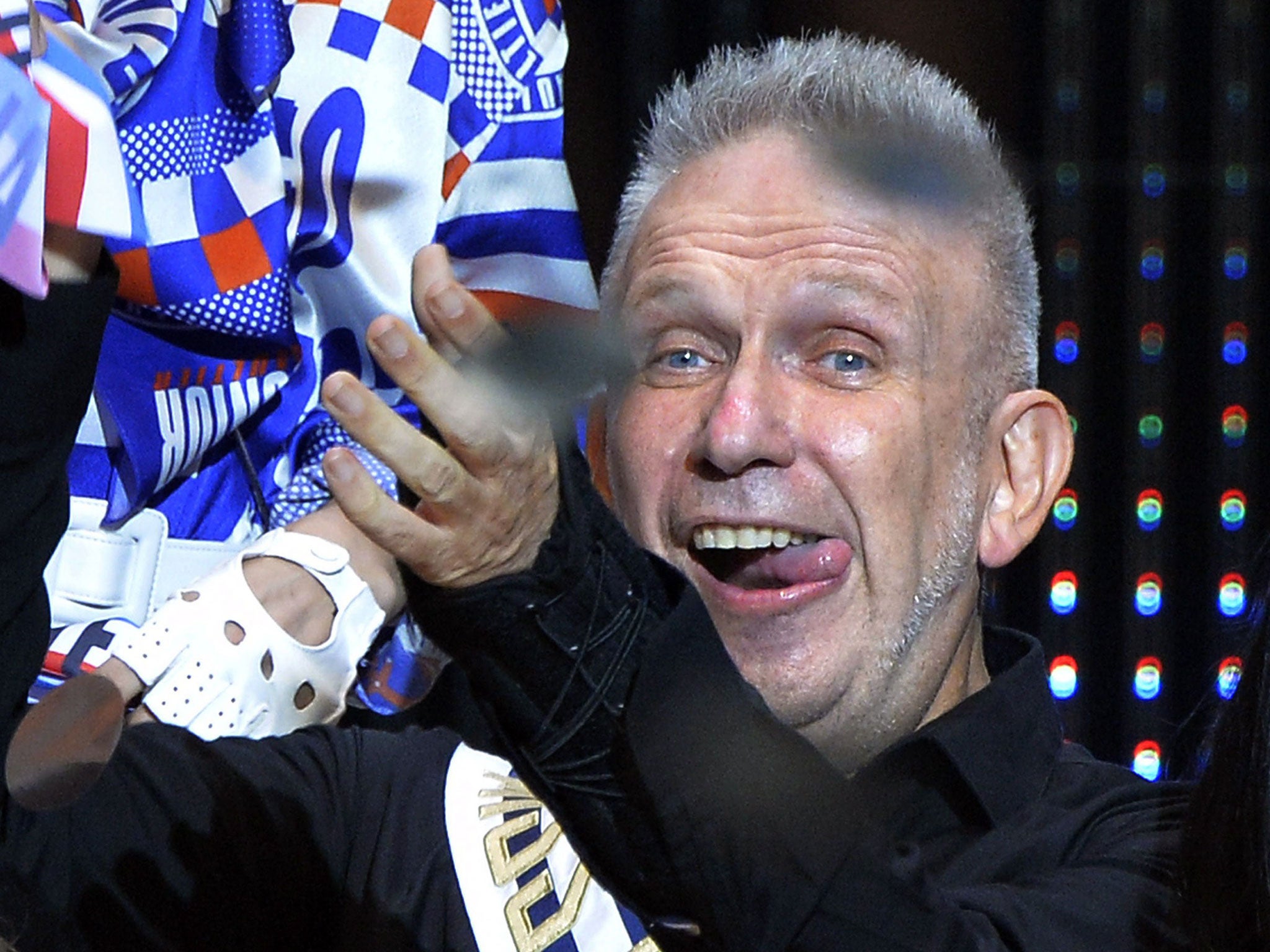
Those are the standards that he has flag-waved for four decades. The joy vibrated through the air, as heavy as the applause that broke out, merrily, at unorchestrated intervals. If Kawakubo focused our attention on the world outside, Gaultier just cranked up the music and made us forget. That element – fantasy, the fantastical, the transportive power of fashion – is what Gaultier has championed his whole career. When he hits the right notes – as he did in Paris last Saturday night – it’s still magic. And it will be missed.
Join our commenting forum
Join thought-provoking conversations, follow other Independent readers and see their replies
Comments